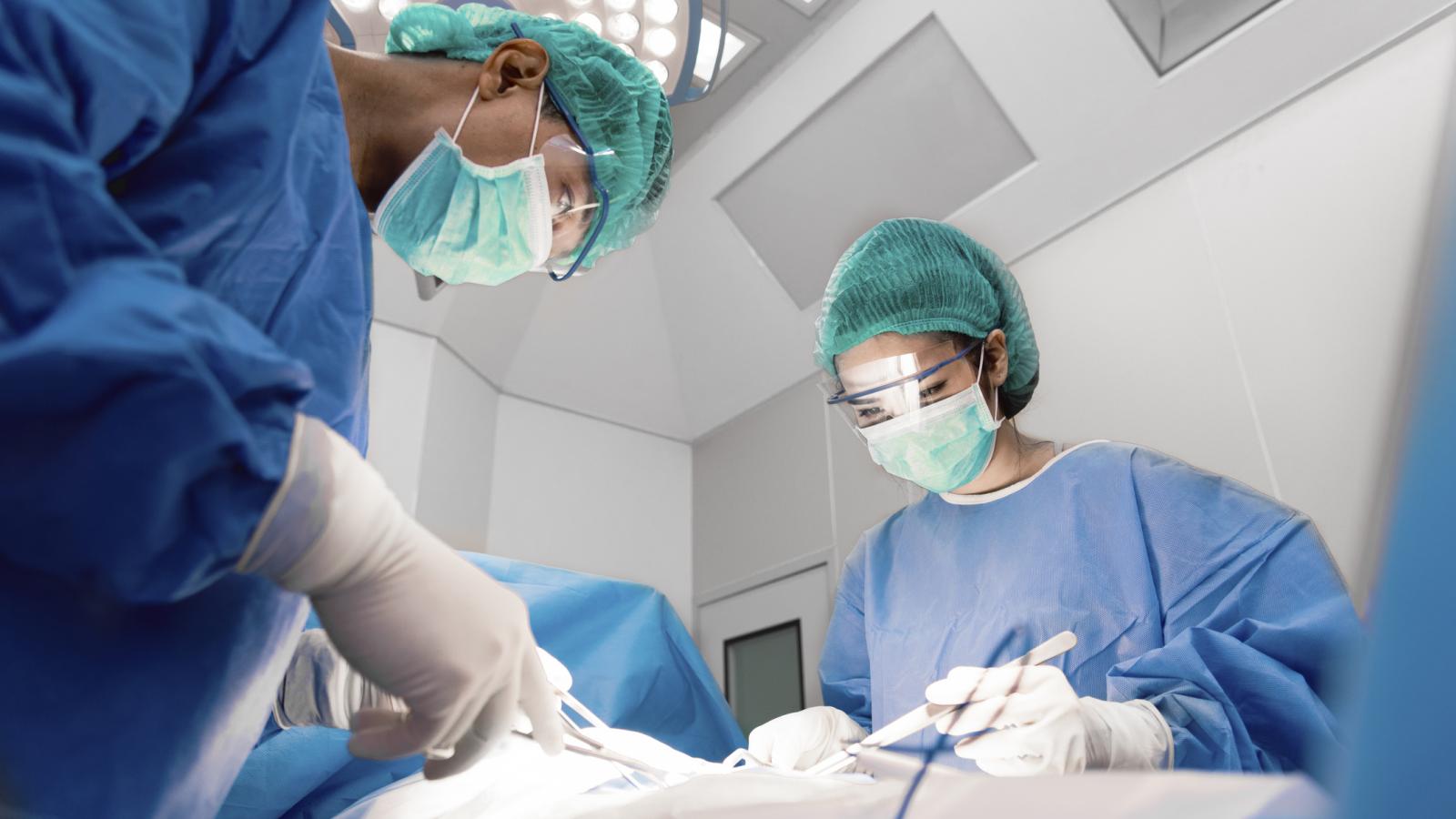Surgery for laryngeal cancer

The aim of surgery is to remove the part of the larynx with cancer cells in it or the whole larynx. Types of surgery include:
- Laser surgery
- Endoscopic resection
- Partial laryngectomy
- Total laryngectomy / Pharyngolaryngoesophagectomy (PLO)
Laser surgery
This surgery is mainly used for stage 1 and 2 cancers. A laser is an intense beam of light that is aimed at the cancer cells to kill them. Any eating and drinking difficulties you have are short term and should clear up over time. But your voice may remain hoarse, unless the tumour is very small.
Endoscopic resection
This surgery can be used for early-stage laryngeal cancer. Your surgeon uses a small flexible tube with a light and camera at one end called an endoscope. During the surgery, your surgeon guides the endoscope into your larynx and takes pictures. These pictures appear on a screen in the operating theatre so your surgeon can see your larynx in detail. They will remove cancer cells using either a laser or surgical instruments. This surgery is done under general anaesthetic. You will not have a wound but may feel some soreness in your throat for a few weeks afterwards.
Partial laryngectomy
With this surgery, the affected part of your larynx is removed. Your surgeon will first make a temporary hole in your neck and place a tube in it for you to breathe through. Having the breathing tube will help your larynx to heal after surgery. It is known as a temporary tracheostomy.
With partial laryngectomy at least one vocal cord is kept so you will still be able to speak. But your voice might be quite hoarse or weak afterwards. Once your larynx has healed, the temporary tracheostomy tube is removed and the hole will heal. You may find eating and drinking difficult at first but this should improve gradually. During this time you may need a feeding tube placed in your nose to help maintain your nutrition. This is called a nasogastric tube.
If the cancer is found above your vocal cords, an operation called a supraglottic laryngectomy is done. For this, you may need a temporary breathing tube (tracheostomy) while the area is healing.
Total laryngectomy
You may need to have your entire larynx removed. This operation is called a total laryngectomy. Depending on how far your cancer has spread, you may have an operation to remove your larynx and the upper part of your oesophagus. This is called pharyngolaryngoesophagectomy (PLO).
If your larnyx is removed you will no longer have a voice box and you will have to learn to communicate in a different way. You will now breathe through your neck instead of your mouth and nose. While this may sound strange or frightening, most people adapt well to this new way of breathing. Your surgeon might also have to remove the lymph nodes in one or both sides of your neck. This is usually the first place where cancer cells spread.
When your larynx has been removed, there will be no connection between your mouth and your lungs. As a result, your surgeon will have to make a permanent opening in the lower part of your neck so you can draw air into your lungs and breathe. This opening is called a stoma. You should be able to eat and drink by mouth again once your wound has fully healed.
Caring for your stoma: Keep the stoma clean and free from tissue or crusts. This is to prevent it getting blocked, which could interfere with your breathing. It will also stop the skin around the stoma getting sore and help to prevent infection.
You may have a lot of secretions or phlegm initially after the surgery but this will reduce by the time you go home.
Using a small freestanding, table-top mirror can make it easier to see what you are doing. It might be helpful to have a relative or close friend with you when learning to look after the stoma.
For more information
Phone
1800 200 700


